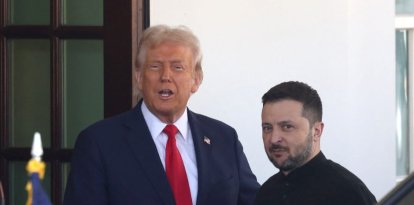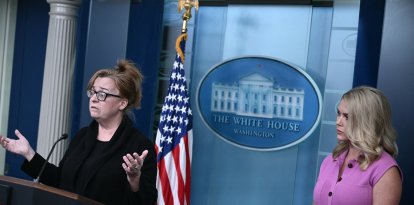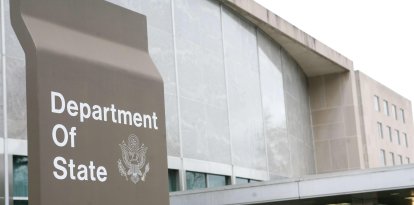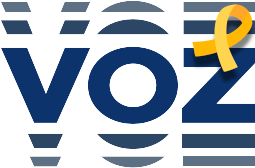ANALYSIS.
Monroe Doctrine: Trump revitalizes one of the most defining concepts in American history
The America First vision could be a reinterpretation of the Monroe Doctrine as a political tool used to reassert American hegemony in the West.
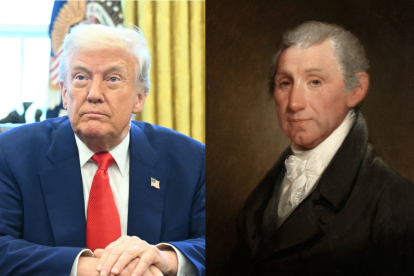
Donald Trump and James Monroe
In less than 100 days in office, the new Trump Administration has proven to be more disruptive than the first in international policy.
Since the beginning of his second term, Donald Trump has reiterated his interest in taking control of Greenland, a territory governed by Denmark; he has set his sights on Canada, a country he suggested annexing as the 51st State; and he is also determined to end Beijing's influence over the Panama Canal.
Likewise, Trump has declared a tariff war against former allies of the United States, as well as with China, its main commercial rival.
While US foreign policy interference was rather weak during the Biden Administration, Trump's strategy would seem to revitalize the old Monroe Doctrine, in a more decisive manner and on a global scale. This doctrine establishes that the Western Hemisphere is a sphere of US influence.
What is the Monroe Doctrine?
In 1823, President James Monroe proclaimed before Congress the doctrine that bears his name. This proclamation stated that the United States would not become involved in European affairs: conflicts and colonial enterprises already in existence, if Europe did not intervene in the affairs of America.
Monroe wanted to prevent absolutist and expansionist European powers from meddling in the American continent.
With the proclamation of this doctrine, Monroe gave a warning to Europe: the American continent would not be subject to future European colonization and any attempt to colonize the Western Hemisphere, by Europe, would be considered an act of aggression against the United States.
After the defeat of Napoleon Bonaparte in 1815, European powers such as Russia, Austria, Prussia, France and Great Britain formed an Alliance with the aim of suppressing revolutionary movements and restoring absolutist order in Europe.
At the same time, the Spanish colonies in Latin America were beginning to gain their independence and the United States was concerned that this new European alliance, determined to establish its power in the Americas, might encircle its sphere of influence by recolonizing some territories in Latin America.
Over time, the Monroe Doctrine helped shape US international policy and redefined its role in the world.
The Roosevelt Corollary and the Panama Canal
In 1904, Theodore Roosevelt presented an extension of the Monroe Doctrine that was used as a powerful foreign policy tool.
The Roosevelt corollary stipulated that the United States could intervene in the internal affairs of Latin America if they were unable to fulfill their international obligations.
The first application of this corollary occurred in the Dominican Republic in 1905, when the United States assumed control of customs to guarantee payment of its foreign debt.
Likewise, Theodore Roosevelt played a crucial role in the construction of the Panama Canal, a project that transformed world trade and geopolitics. During his presidency, in 1903, the Hay-Bunau-Varilla Treaty was signed, giving the United States control over the construction and administration of the canal.
The Panama Canal, inaugurated in 1914, consolidated US influence in the region, although it also generated tensions with Panama, which finally regained control of the canal in 1992.
Trump and the Monroe Doctrine
During his first term, Trump had already peeked at the principles of this doctrine in the speech he pronounced in 2018, before the United Nations: "Here in the Western Hemisphere, we are committed to maintaining our independence from the intrusion of expansionist foreign powers."
“It has been the formal policy of our country since President Monroe that we reject the interference of foreign nations in this hemisphere and in our own affairs,” he exclaimed.
Likewise, the America First vision could be a reinterpretation of the Monroe Doctrine as a political tool used to reassert US hegemony in the West.
Under these principles, the new Trump Administration wants to regain control over the Panama Canal.
Trump considers the canal to be controlled by China and has not wanted to rule out a military intervention to recover this important waterway that is of great economic importance to the United States.
In early February, Trump stated in press conference that "China is managing the Panama Canal that was not given to China, that was given to Panama foolishly."
In the case of Greenland, Trump has placed his interest in the island because of its vast natural resources, but also because of fears of the existing Russian and Chinese military presence in the region.
As for tariffs, considered to be the political essence of Trump, the president has used them not only as negotiating tools, but as an economic measure that protects the national security of the United States.
Economic protectionism is the backbone of the US renewal project for the Trump Administration. In this sense, tariffs could be considered as geopolitical tools that seek to protect the commercial and territorial integrity of the United States within the global landscape.
Thus, the foreign policy decisions taken by the new Trump Administration seek to protect the U.S. sphere of influence. An influence impoverished and in many cases belittled by the Biden Administration, to the point of allowing illegal immigration, fentanyl trafficking and the importation of terrorist groups such as the Tren de Aragua and MS-13 to spill over the border.
RECOMMENDATION
